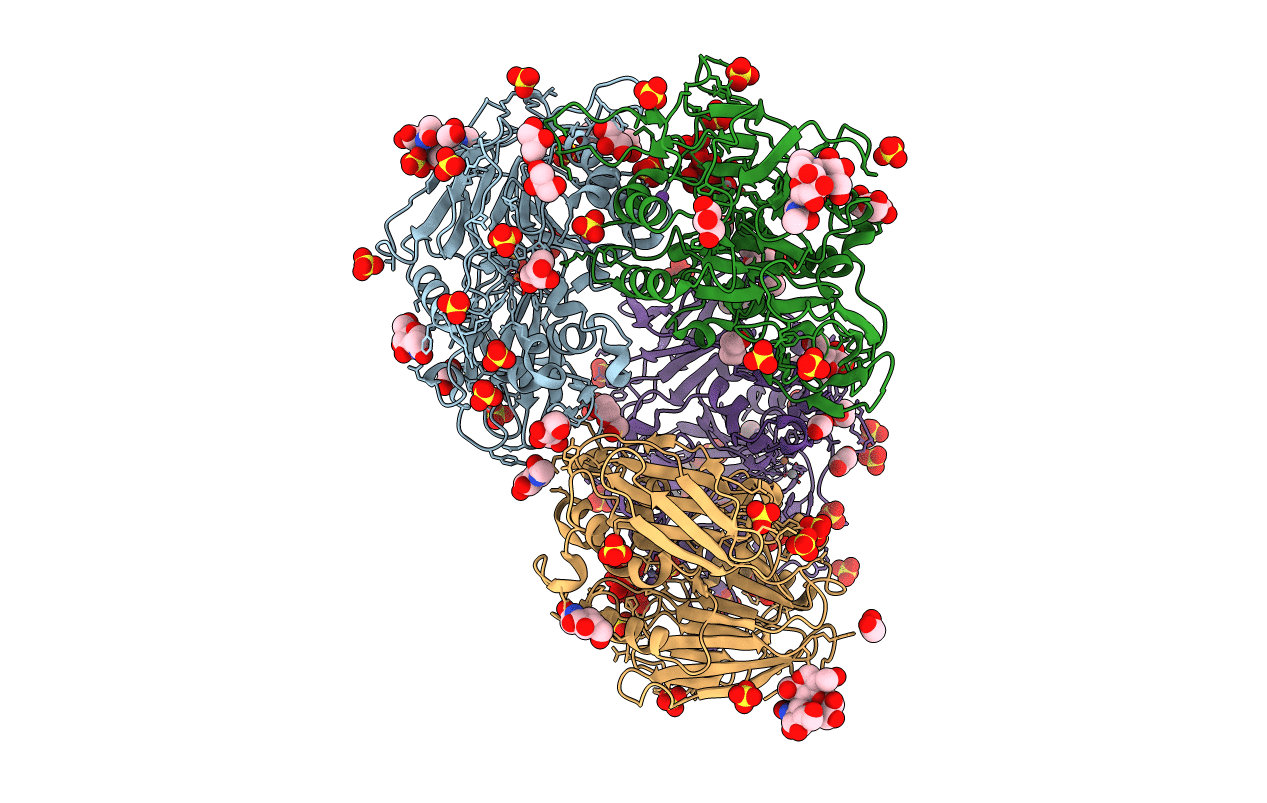
Deposition Date
2018-10-13
Release Date
2019-04-03
Last Version Date
2024-10-23
Entry Detail
PDB ID:
6HWR
Keywords:
Title:
Red kidney bean purple acid phosphatase in complex with adenosine divanadate
Biological Source:
Source Organism:
Phaseolus vulgaris (Taxon ID: 3885)
Method Details:
Experimental Method:
Resolution:
1.95 Å
R-Value Free:
0.19
R-Value Work:
0.16
R-Value Observed:
0.16
Space Group:
P 31 2 1


